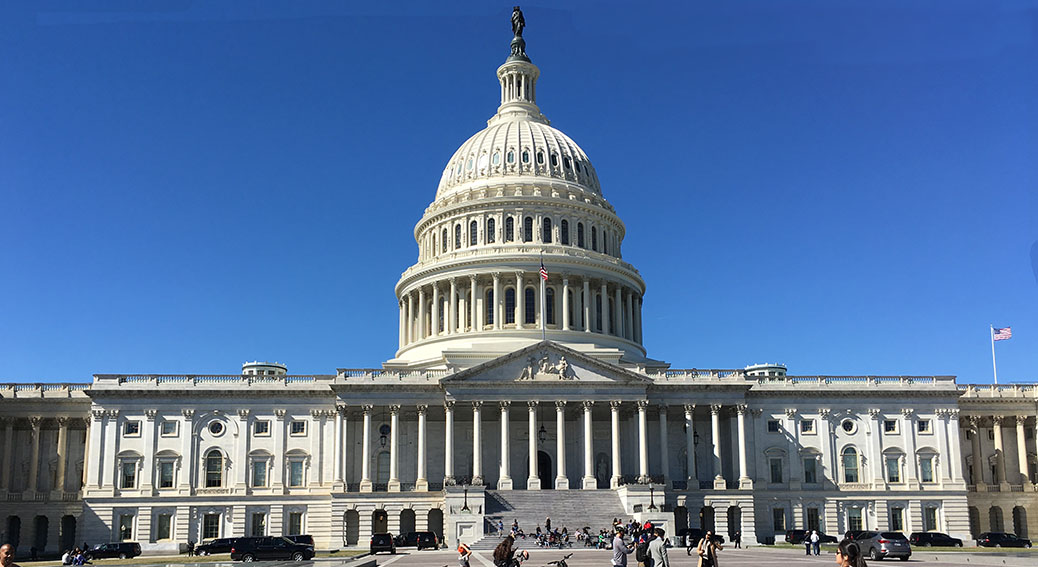With the decision to delay a vote on the Better Care Reconciliation Act (BCRA) and reeling from the latest analysis from the Congressional Budget Office (CBO), Senate Republicans are regrouping to determine next steps and a timeline to bring the proposed legislation to the floor for a vote.
However, Senate Majority Leader, Mitch McConnell (R-Kentucky) has said that they will continue to work on the bill during the 4th of July holiday recess to seek compromises from the now more than a dozen Senate Republicans who have voiced their opposition.
Among the many challenges the legislation faces comes from the negative impact as illustrated in the updated CBO scoring. The American Hospital Association (AHA), has completed a state-by-state impact analysis related to the BCRA. Read more.
We continue to urge Senator Thune and Rounds to oppose the BCRA, and your voice is helping carry this message. Thank you for continuing to share your concerns!
Below is the updated data on the impact that the BCRA would have on Medicaid and private health insurance coverage, and federal spending on Medicaid and marketplace subsidies, for South Dakota and the Nation. This data is now calibrated to the CBO scoring based on the June 22 BCRA draft.
Table 1: Change in Private Health Coverage, Medicaid Coverage and Number of Uninsured under the BCRA (# of Enrollees) in the U.S. and South Dakota.
| Category |
2018 |
2026 |
||
|
U.S. |
SD |
U.S. |
SD |
|
| Employment-based Coverage | -4 m | 5.3 K | -244 K | -592 |
| Non-Group Coverage, Including Marketplaces | -7 M | -9.2K | -7 M | -8.1 K |
| Medicaid | -4 M | -6.8 K | -15 M | -39 K |
| Increase in Uninsured | 15 M | 21.3 K | 22 M | 47.6 K |
Note: Table 1 shows the change in coverage in the private insurance market and Medicaid, as well as the increase in the number of uninsured, under the BCRA compared to the current law in calendar years 2018 and 2026. The Medicaid losses above include, where applicable, losses resulting from the fact that, in scoring BCRA, CBO used its March 2016 baseline that projected that certain non-expansion states would expand Medicaid in the future. Non-group coverage includes coverage purchased through the exchanges as well as outside of the exchanges. Loss of coverage in the private insurance market and Medicaid may not add up to the total number of uninsured due to additional loss of coverage in the Basic Health Program.
Table 2: Net Change in Tax Credits/Federal Marketplace Subsidies under the BCRA in the U.S. and South Dakota.
| Fiscal Year | U.S. | SD |
| 2018 | -$12 B | -$48.8 M |
| 2026 | -$56 B | -$238.6 M |
Note: Table 2 shows the effect on federal spending under the BCRA, as compared to the ACA, in the non-group market. Factors contributing to reduced federal spending include the removal of the individual mandate resulting in fewer insured individuals receiving tax credits and subsidies, repeal of the Basic Health Program (BHP), repeal of the cost-sharing reductions and advanced premium tax credits, and the implementation of the new tax credit structure. The $12B reduction in 2018 is primarily the result of repeal of the individual coverage mandate. The $56B reduction in 2026 also accounts for the BCRA tax credits, which go into effect in 2020.
Table 3: Change in Federal Medicaid Spending under the BCRA in the U.S. and South Dakota.
| FY 2018 | Cumulative Total for FY 2017-2016 | |
| U.S. Total | -$12 B | -$772 B |
| South Dakota | -$18.6 M | -$1,182.4 M |
The Medicaid losses above include, where applicable, losses resulting from the fact that, in scoring BCRA, CBO used its March 2016 baseline that projected that certain non-expansion states would expand Medicaid in the future.
Sources: KNG Health Consulting, LLC analysis of H.R. 1628 Better Care Reconciliation Act of 2017, released June 22; and American Community Survey (2015 Data Release), U.S. Census Bureau. Other data sources included: the 2016 Actuarial Report on the Financial Outlook for Medicaid, documents and datasets from the Agency for Healthcare Research and Quality, the Bureau of Labor Statistics, the Centers for Medicare & Medicaid Services, Office of the Assistant Secretary for Planning and Evaluation, and the Kaiser Family Foundation. This data analysis is tied to the BCRA CBO estimate released June 26. These estimates do not reflect the following aspects of the BRCA: (1) state selection of base period for establishing Medicaid per-capita caps; (2) state selection of block grants instead of being subject to the per-capita caps; (3) state stability funds; (4) modifications to Medicaid DSH allotments.







